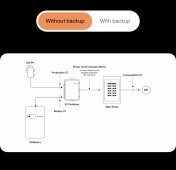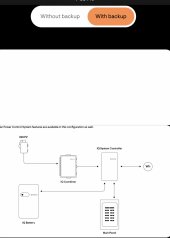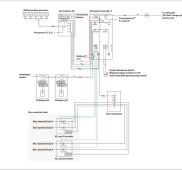California760
New Member
So im trying to understand the functions between this batterys
Ive seen several designs from the enphase site just cant seem to wrap my head about the different functions can you elaborate a bit
NO POWER OUTAGE
1.) solar+ combiner box+battery
No load controller
No heavy loads
No iq controller
So what does battery do in this setup?
POWER OUTAGE CAPABILITY
2.) Then ive seen
solar+combiner box+ IQ controller for power outages
No heavy loads
No load controller
So what do battery's do in this setup?
POWER OUTAGE CAPABILITY
3.) last option ive seen
Solar+combiner box+ IQ controller + 1 load controller for 2 heavy loads
Or 2 load controllers for 4 heavy loads.
SO IF OPTION # 2 and option #3 are for power outages why does option 2 not offer load controllers isn't that what makes your appliances kick on when power goes out?
Vs the option # 3 where it offers load controllers for your appliances which that makes a bit sense to me
So what does that mean kinda confused?
So now going back to option # 1 if it has a battery but does nothing when the power goes out what exactly is this battery doin?
Is it just feeding the grid at nights? Or when panels are not producing for a cloudy day
Can someone elaborate on this please and help me understand the function between
All 3 options
Thank You
Ive seen several designs from the enphase site just cant seem to wrap my head about the different functions can you elaborate a bit
NO POWER OUTAGE
1.) solar+ combiner box+battery
No load controller
No heavy loads
No iq controller
So what does battery do in this setup?
POWER OUTAGE CAPABILITY
2.) Then ive seen
solar+combiner box+ IQ controller for power outages
No heavy loads
No load controller
So what do battery's do in this setup?
POWER OUTAGE CAPABILITY
3.) last option ive seen
Solar+combiner box+ IQ controller + 1 load controller for 2 heavy loads
Or 2 load controllers for 4 heavy loads.
SO IF OPTION # 2 and option #3 are for power outages why does option 2 not offer load controllers isn't that what makes your appliances kick on when power goes out?
Vs the option # 3 where it offers load controllers for your appliances which that makes a bit sense to me
So what does that mean kinda confused?
So now going back to option # 1 if it has a battery but does nothing when the power goes out what exactly is this battery doin?
Is it just feeding the grid at nights? Or when panels are not producing for a cloudy day
Can someone elaborate on this please and help me understand the function between
All 3 options
Thank You






